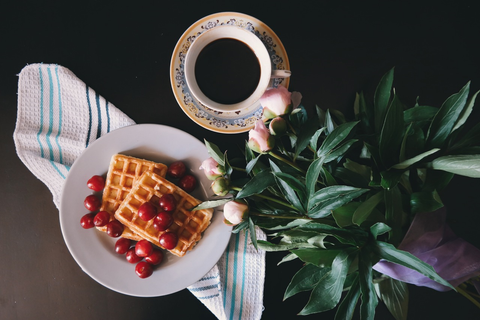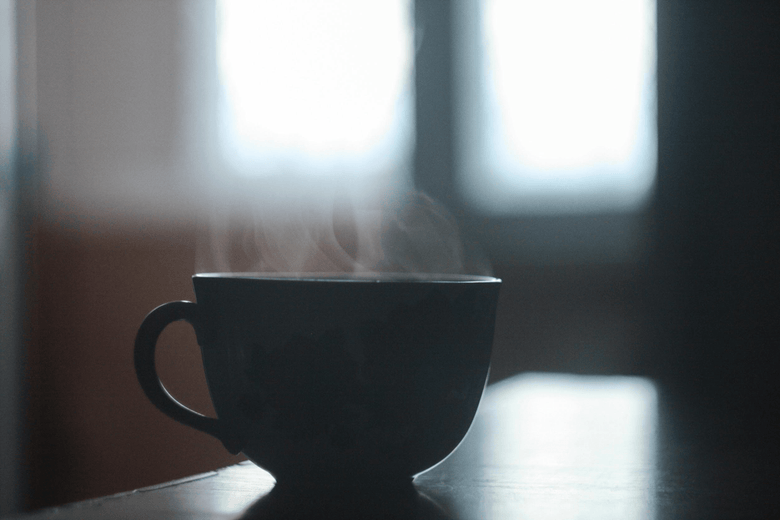Have you ever had coffee with a wild and robust fruity or floral flavor? If so, those flavors were primarily coming from the coffee’s aromas - not the flavors themselves.
Your sense of smell plays a major role in your ability to taste. This is why your favorite foods seem to taste rather bland and dull when you have a cold or stuffy nose.
Brewed coffee has over 800 aromatic compounds, beating out every other kind of beverage, including wine, which only has about 250. Simply put, aromas in coffee are very important and impact our tasting experience more than we give them credit for.
I want to teach you how to taste and describe the aromas you’ll find in coffee. With some practice, you may even be able to tell if your coffee is over or under extracted by smelling it alone - that’s how important aromas are in tasting!
This blog on coffee aromas is part of our Coffee Tasting Series. I suggest you head to the beginning of the series to make sure you get the full experience and learn as much as you can.
Coffee Aromas Are Fleeting
Coffee aromas don’t stick around for very long. The aromatic oils evaporate, the acids break down, and the organic compounds decay after just two to three weeks of being out of the coffee roaster. To make matters worse, coffee only has 20-30 minutes of peak freshness once the beans are ground.
If you want to experience the aromas of your coffee in full, you need to build a couple habits into your regular coffee routine:
- Buy freshly roasted coffee frequently in small amounts
- Grind the beans right before you brew them
Doing these two things will elevate your coffee game dramatically. Fresh coffee is the best coffee!
If you’re trying to taste aromas in stale, pre-ground coffee, you’re in for a frustrating time. There are a few reason those coffees are bland and boring - the the lack of aromas one of them.
In the pursuit of delicious and balanced coffee, we designed our own manual coffee grinder that we’re very proud of. If you’re in the market for a reliable, affordable, and durable burr grinder, make sure to check out ours.
4 Types Of Aromas
The Specialty Coffee Association breaks down coffee aromas into four main categories. These broad categories help us process the 800+ aromatic compounds by giving us some context and a way to get more specific with our descriptors.
Don’t let these strange category names scare you away. They’re intimidating, but what’s underneath them is what really matters.
Enzymatic Aromas
Some of the most pleasant and unique aromas in coffee are by products of enzymatic reactions that take place in the beans themselves during growth and processing. These aromas are products of careful growing and processing.
- Fruity (blueberry, apple, apricot)
- Citrus (lime, lemon)
- Floral (tea rose, cardamom)
- Herby (garden peas, cucumber, basil)
Read: Why Fresh Coffee Is The Best Coffee
Sugar Browning Aromas
These aromas comes about during the Maillard Reactions of the roasting process, when the sugars are caramelized (browned) and flavors develop. These aromas are targeted by all roasters.
- Chocolatey (vanilla, dark chocolate, butter)
- Caramel-y (caramel, honey, hazelnut)
- Toasty (roasted peanut, walnut, toast)

Dry Distillation Aromas
These aromas are the product of burning plant fibers during roasting and are highly dependent on the roaster’s style, goals, and willingness to roast on the darker side.
- Woody (cedar, pine)
- Spicy (anise, clove, pepper)
- Carbony (tobacco, smoke)
Aromatic Taints
This category of aromas contains the aromas that are the result of low quality or diseased coffee. Sadly, a clever roasted can only do so much to eliminate these when they come with these aromas built-in to the beans.
- Fermenty (bad wine, spoiled fruit)
- Leathery (rubber, leather, beef)
- Grassy (straw, potato)
Tasting And Describing Aromas
To start, give the coffee a good smell. Breathe those aromas in deep. What do you smell? Try to get a general idea of the category type before you take a sip of coffee. Think of these aromas as your control in a science experiment.
Now take a drink, savor the coffee, and swallow. Notice the flavors that appear as you swallow - these are the aromas rising to your retronasal passage.
Read: Blades VS Burrs: What Is the Best Type of Coffee Grinder?
These aromas may be difficult to separate from the coffee’s flavor. Think back to that initial deep smell and try to remember what the aromas were like, then compare them to what you’re experiencing now to separate the flavors from the aromas.
Some coffees have very distinct aromas. Sometimes the aromas blend smoothly with the flavors, making them hard to pick apart. Either way, the goal is the same: find an aromatic characteristic, describe it, and enjoy it.
A Few Examples
The classic Sumatran coffee has a deep, dark flavor with spicy and woody aromas that come about when the coffee is roasted on the darker side.
I’ve had several coffees from Honduras that had a balanced flavor with crisp caramel and honey aromas (which pair really well with their caramel and honey sweetness also found in the coffee).
Naturally processed Ethiopian coffees are often ripe with enzymatic aromas that were produced during the processing stage. These aromas can be wildly fruity and sweet, making them some of the most prized coffees in the world.
When in doubt, ask yourself the magic tasting question and make a careful guess:
What does this remind me of?
Read: How Manual Coffee Brewing Can Change Your Life
---
Aromas add so much to coffee’s sensory landscape, and learning to appreciate them apart from the other flavors makes coffee much more enjoyable and interesting.
As always, don’t be afraid to guess. Guessing helps our brains process what we’re experiencing, even when we’re not very confident in our guess. It’s much better to make a careful guess than to stay quiet out of fear of being wrong.
Remember, aromas are some of the first things to leave coffee, so always buy freshly roasted coffee and don’t grind the beans until you are ready to brew them.
Up next in our Coffee Tasting Series: Mouthfeel!
Happy smelling!


